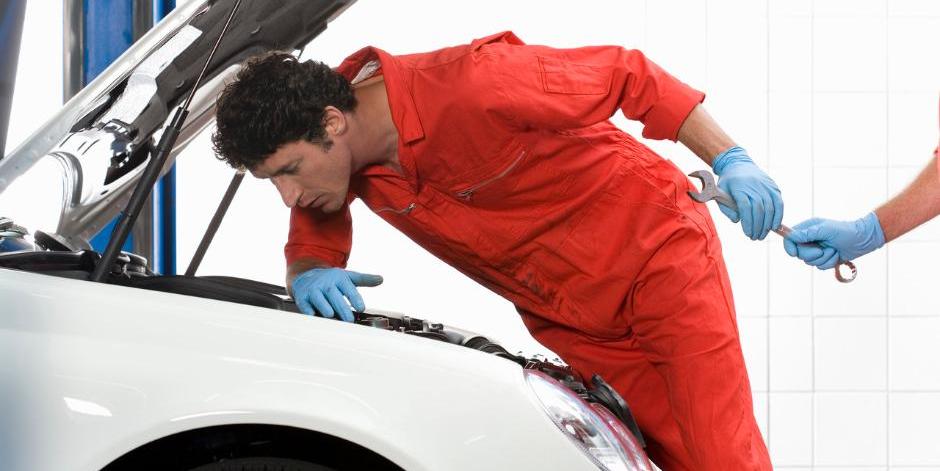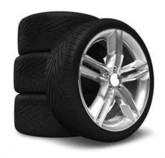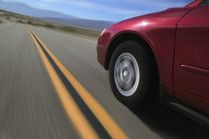
FAQs – Tires
Q: Why do I see so many different prices for the same tire?
A: When shopping for tires, it’s important to compare the total cost—including mounting, balancing, valve stems, TPMS transfer, tire disposal, and an alignment check.
Q: How often should I check the air in my tires?
A: For safety and maximum tire life, check the air pressure in your tires at least once a month. Use an accurate tire pressure gauge. Don’t fill your tires by look. Every time you bring your car to Tolker Auto Service for an oil change, we inspect your tires and show you how they’re wearing. We would be happy to check and fill your tires for free.
Q: What are run flat tires?
A: Run-flat tires are designed to resist tire deflation and punctures. They can be driven on, at reduced speeds and distances, after taking on damage that would stop a normal tire. This allows the driver to make it to Tolker Auto Service to fix or replace the tire.
Q: How much air should I put in my tires?
A: The recommended tire pressure varies widely by tire size and type. Consult your owner’s manual. The specifications of your original tires are also listed on a decal on the driver’s doorjamb or inside the glove box. If you buy a set of replacement tires, be sure to write down the new specifications.
Q: How can I protect against blowouts?
A: The best protection against blowouts is to properly inflate your tires. Don’t let them get too soft; don’t overinflate them. Also, make sure you select a tire that is designed for your driving conditions.
Q: How can I get more mileage out of my tires?
A: Check your tire pressure regularly, rotate your tires, and watch for signs of uneven wear, which can mean alignment problems.
Q: How often should I rotate my tires?
A: Every 6,000 miles, or every other oil change, assuming you change oil every 3,000 miles.
Q: Why buy winter tires?
A: Winter tires, also known as snow tires, are designed for superior traction on ice, slush, and snow. The rubber on winter tires is formulated to retain elasticity and grip in temperatures below 45 degrees. Standard radial tires harden at these temperatures and lose some of their hold on the road. Also, winter treads are designed with special snow patterns. Look for the mountain snowflake imprint for maximum confidence in winter driving.
Q: How do I know when I need new tires?
A: When your tread wears down to 4/32 of an inch you start to lose significant traction on wet or snowy roads. You’re o.k. if the tread covers part of Washington’s head. To be legal in most states tires must pass the Lincoln penny test, a minimum tread depth of 2/32 inch. Manufacturer’s also place wear bars in the grooves between tire treads. When the tread is nearly flush with the bars, it’s time to replace your tires.
Q: Why is tire tread depth so important to safety and handling?
A: On wet pavement, the tread grooves sluice water away from the tire where it makes contact with the road. A typical new passenger tire has a tread depth of 10/32 of an inch. When tread wears to even half that depth, the risk increases that your car will hydroplane—slide on the surface of standing water—especially at highway speeds. On snowy pavement, horizontal treads and small slits in the rubber called “sipes” bite into the snow. The deeper the tread, the better the grip.
Q: How do I find quality replacement tires for my vehicle?
A: Come to the experts at Tolker Auto Service. We will recommend the right tires, based on wheel size, vehicle make and model, expected load, how you drive, and other factors.
Q: What size tires should I buy?
A: Tire size and other important information are imprinted on the tire sidewall.
Q: What’s the speed rating on my tires?
A: This information is imprinted on the tire sidewall.
Q: How do I use the Uniform Tire Quality Grade (UTQG) to make an informed tire purchase?
A: Tire grade ratings are intended to provide a simple way for you to compare tires. The ratings, imprinted on the tire sidewall, are based on tests under controlled conditions. The federal government specifies the tests, but manufacturers assign the temperature, traction, and temperature ratings.
Q: My tire pressure light is on, what should I do?
A: The Tire Pressure Monitoring System ( TPMS ) warning light means that at least one of your tires is underinflated by 25%. Check your tires with an accurate tire gauge and fill them to the correct inflation pressure. Tolker Auto Service would be happy to do this for you for free. If you identified the TPMS symbol on your dashboard as a tire pressure warning, congratulations! A recent study by TPMS manufacturer Schrader, found that 46% of drivers did not know that symbol—a tire in cross section with an exclamation point inside—means low tire pressure. Tire inflation pressure monitoring systems (TPMS) were introduced in luxury cars in the late 1980s and federally-mandated on all new passenger cars and light trucks beginning with the 2008 model year.
Q: My ride is quite rough. What can I do?
A: For a smooth ride, tires must be balanced properly. Also, some tires ride better than others. Every tire is a compromise. Tires with a long tread life have a harder ride. Tires with a softer ride wear faster. Visit Tolker Auto Service for tire balancing and recommendations on the best replacement tires for your road conditions and the way you drive.
Q: My car pulls to one side. Could this be a problem with one of my tires?
A: Possibly. A very soft tire can cause your car to pull to one side, but this is a very unsafe situation. Your car could also be out of alignment. Stop by Tolker Auto Service for assistance.
Q: Can my flat tire be repaired instead of replaced?
A: Only punctures in the center treads are repairable. This is an evaluation for the professionals at Tolker Auto Service.
Q: How important is tire pressure to my fuel economy?
A: You can improve fuel economy by up to 5% by keeping you tires inflated to the correct pressure and using the right grade of motor, according to the U.S. Department of Energy, Office of Energy Efficiency and Renewable Energy. If you drive 12,000 miles per year and gas is $3 per gallon, that’s a savings of $72 per year, assuming your car gets 25 miles to the gallon.


